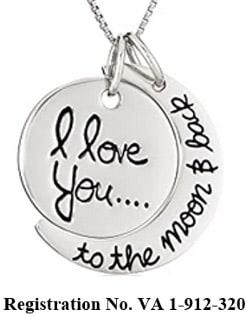Safeguarding Your
Jewelry Copyright Protection Law, Infringement, and DMCA Takedowns
Copyright law protects jewelry designs and copyright registrations are used to takedown infringing jewelry from Amazon and other platforms. Just ask Drake, Heidi Klum, and Nasty Gal who were all sued for copyright infringement by jewelry designers!

Heidi Klum was sued for copyright infringement by Van Cleef & Arpels for allegedly copying the Alhambra jewelry design, Drake was accused of copying a diamond adorned owl pendant given to him by a jeweler, and Nasty Gal’s jewelry designs are accused of infringing Pamela Love’s copyrights. To reduce the risk of copyright infringement, jewelers and jewelry designers should conduct reverse image searches on designs used for inspiration. The manufacturer’s name should be searched at the US Copyright Office to find a list of copyright registrations that may cover the jewelry designs.
Because jewelry designs are protected by copyright law, jewelers and designers need to protect their valuable creations to prevent copying and knockoffs. To qualify for copyright protection, the jewelry design must be original, meaning independently created by the designer and not copied from another’s design, and the level of creativity required to qualify for protection is minimal. While copyright protection extends as soon as the jewelry is created, to file a lawsuit and to receive statutory damages awards and attorney’s fees, you must have a copyright registration certificate. A copyright registration application is relatively inexpensive and affords numerous benefits. In addition to being mandatory before filing a copyright infringement lawsuit, a copyright registration provides the following advantages:
- If the copyright application is filed within the first three months from the publication date, the designer is entitled to statutory damages of up to $150,000 for willful infringement, plus attorney’s fees. The sooner a jewelry designer applies for copyright protection the better. Although a copyright owner is entitled to the same remedies if the registration is procured before the infringement begins, it is highly advisable to file the application as soon as possible.
- By registering your designs before they are published, you can include up to ten pieces of unpublished jewelry designs in one application, as long as they have the same owner.
- Copyright registrations obtained within five years of publication constitute presumptive evidence of validity of the copyright and the facts provided in the certificate. If registered outside the five-year period, the designer has the burden of proving validity and ownership.
As more jewelers sell their pieces on Amazon, Walmart, and Etsy, copyright registrations are imperative to protecting jewelry designs from being copied by competitors in these online marketplaces. A copyright registration allows a jewelry designer to file DMCA takedown notices with online platforms like Amazon, which are then required to quickly remove the accused product’s listing in order to avoid copyright infringement liability. Our copyright lawyers counsel clients who are both asserting copyrights and those who may have been victims of false copyright infringement takedown notices by filing counternotifications with Amazon to relist the improperly accused jewelry.
Our copyright attorneys can advise whether your jewelry designs meet the minimum level of creativity to be copyrightable, or whether patent or trademark protection are more appropriate. Copyright laws do not protect ideas or facts, only original designs that meet the minimal level of creativity. For example, in Todd v. Montana Silversmiths, Inc., 379 F. Supp. 2d 1110 (D.Colo. 2005), the court drew a distinction between original and creative works that are protectable by copyrights versus unoriginal works copied from the public domain. The plaintiff accused another jewelry designer of impermissibly copying a barbed wire jewelry design. The court concluded that the plaintiff s design was not protected by copyright law because “[w]hile Plaintiff is no doubt a skilled artist capable of making jewelry with a certain aesthetic appeal, she has failed to show what copyrightable features she has added to her work to separate it from ordinary public domain barbed-wire. The court, while acknowledging the skill and judgment involved in the design process, nevertheless declined to extend copyright protection to the unoriginal result of that process, stating that “[t]he fact remains that for all her aesthetic choices, the final arrangement of the elements in her jewelry still corresponds to the arrangement of public domain barbed-wire.”
If your jewelry designs do not meet the minimum level of creativity for copyright protection, that is not the end of the road in seeking protection for your jewelry designs. Our intellectual property attorneys can advise whether the designs may qualify for design patent protection and/or trade dress or trademark protection.

